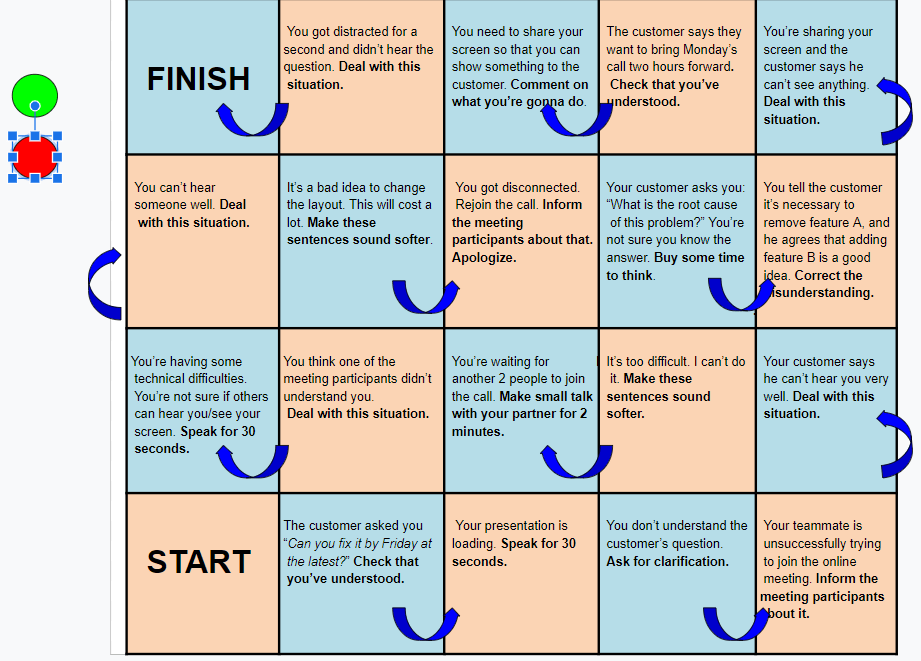With the ongoing change in learning methodologies, the outburst of new tools and platforms, ideas and concepts teachers globally need to keep up with the track and do their best to learn as much as possible to meet the learning needs of their target audience.
Along with the well-versed methodologies and activity design approaches (SAMR) we cannot fail but notice the importance of making learning fun and useful at the same time. Saying this, we all have played a game with your language students trying to make the lesson more interactive and interesting. Some of us have done it by researching the basics of gamification, some just followed their gut feeling. Let’s have a look at what gamification is and whether it is a useful way of boosting speaking fluency among the learners.
First things first, we should differentiate between gamification and game-based learning (GBL). While gamification is the application of a certain game rule to learn something new (words, phrases, structures, etc.), GBL is actually learning based on games. An example here can be that of a board game, where students need to learn multiplication, addition, etc.
Research has shown that students retain only 20% of the information that is being discussed during the class in the form of standard teaching methodologies. This is because they are exposed to lecture styles, repetitive exercises and drilling. This can be fun in the beginning but gets out of fashion quite soon. This is when all the educators start to wonder about how to get back the attention and interest of their groups.
Gamification, on the other hand, helps to keep the drive going by implementing different game rules in the actual process of learning (retention of information — 90%). A simple example of gamification can be the following;
“You have 10 sentences to complete. The first student to finish will get a prize”.
This gets the students going, doesn’t it? (well, considering the age group for sure).
Gamification plays on the competitive nature of people and extrinsically motivates the students to go forward, to win the game, to get the prize, etc.
So, how does gamification work in speaking practice?
1. Role-plays
One of the old favourites but still an actual one. Contextual simulations work here the best where students need to act out dialogues based on the roles they receive using the target language you want them to cover. This is fun, as students don’t need to talk about themselves (which some are unwilling to), they take up a new role and can behave differently which is the fun part.

For us, the teachers, it’s really beneficial, as our primary goal — to get them speaking, is achieved. An example activity is below;
2. Tic-tac-toe
An old game like this can be very useful in getting the students to speak, using the target phrases and keeping the competitive nature of the game. Below is an example of the game used to revise language to talk about problems/issues.

3. Board games
Another fun way to have students speak is the well-practised board games like the monopoly where students need to use dice, land on a square and follow the instruction in it. These types of games can be used to revise tenses, phrases, conduct mini-dialogues, etc, They can get as creative as you wish. Below are some examples.



4. Other games
A lot can be used to gamify speaking. My personal favourites though are;
- The game of Mafia (the rules of the game are the same, the language of interaction is English). A great way of revising the language of suspicion, conditionals, indirect structures
- Quests (here is a sample quest task). A very interesting way to practice hypothetical structures, functional language for decision making, etc.
- Who wants to be a millionaire — A very wide chance to practice any language you want (in form of the game questions), helps students to conduct presentations, practice interaction and leading discussions. Same can be done in form of interviews (interviewer vs. a famous person)
We are sure, there is much more you can come up with. So why don’t we share more ideas on how to gamify speaking? Looking forward to your posts.






 Вероника Аветисян
Вероника Аветисян 
 Маргарита Аветисян
Маргарита Аветисян 



Helen, thank you for the questions.
Well, it depends on the number of the quest cards you have. Normally, I divide groups of 10 into 2 subgroups and put out the challenge of who will win first. It’s easier to monitor and you also play with the competitive nature of the students.
Let us know if this answered your questions. Will be happy to elaborate.
The ideas are great, thank you a lot! The only request is could you please explain how to use the quest cards with a group of about ten students?